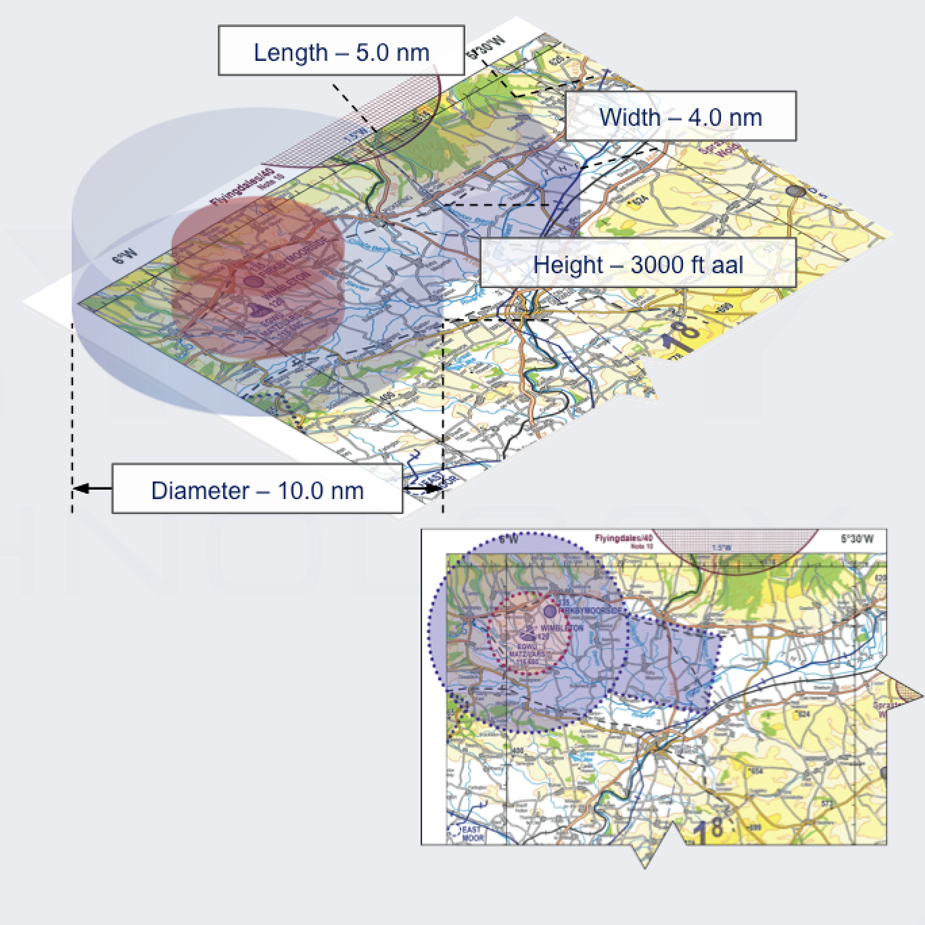Military air traffic zones
We offer our graduates a free consultancy service whilst they remain part of our standard. We are enjoying a unique position in the market and we are often called by non-Flyby pilots to help them understand a rule or regulation. Many of those questions centre on flying inside a Military Air Traffic Zone (MATZ).

Military Air Traffic Zone
This category of airspace seems complex but is in fact very easy to interpret. The large cylinder around a military aerodrome has a radius of 5 nautical miles. It will extend to a height of 3000 feet above the aerodrome. It may also have what is called a stub extending out along the centreline of the main instrument runway. Inside the MATZ is a regular Aerodrome Traffic Zone (ATZ), which is a cylinder 2 nautical miles radius and extends from aerodrome level up to 2000 feet.
Regulation
If you are flying a UAS of mass greater than 7kg you must obtain permission from the local air traffic control unit to operate inside the ATZ. If you are below 7 kg you do not need permission to operate inside the ATZ but it is certainly a bad idea to do so without communicating first. You could find yourself in trouble for breaking article 240 of the Air Navigation Order for endangering an aircraft, if you were to come into conflict with other air users. The outer area and stub is airspace which only the military MUST recognise; but again it is our recommendation that you cooperate and communicate with controllers to enable safe operations. You must always abide by article 94(2) that states that you must only fly the aircraft if reasonably satisfied that the flight can be made safely.
Training
Many of our training sites are deliberately chosen because of their position inside civilian and military airspace. This shows our new pilots how to coordinate and compromise to enable a safe operation. If you do not fly in and around complex airspace it is a very good idea to practise setting up a training detail. This will give you exposure to dealing with other agencies and build confidence in your processes and procedures for when you must operate alongside manned aviation.




















